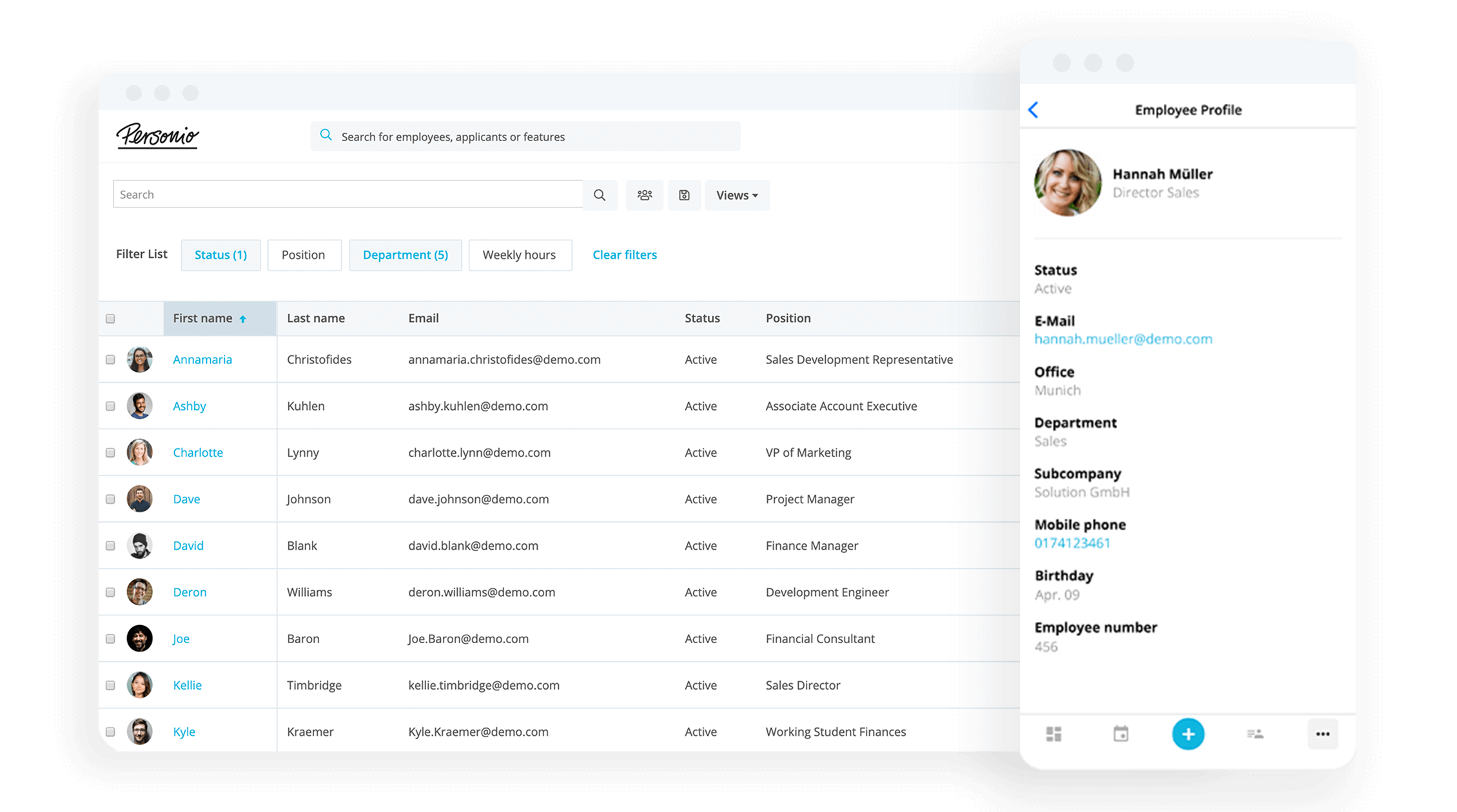Is A Flatter Structure Right For Your Organisation?

Nearly half of workers say they have a manager or team lead that makes them want to quit their job. So, what if you simply had fewer managers?
Although it may seem like a dramatic move, a flatter structure of management can improve an organisation’s productivity, creativity and communication. But is it the right decision for your team? Read on to find out.
Ready to focus on every element of employee experience? Download our guide.What Is A Flatter Organisational Structure?
Most organisations have layers of management that follow a specific hierarchy.
Traditionally, the President or CEO is at the top. Underneath, you’ll find the Vice President or Senior Vice President, followed by multiple layers of middle management. Then, at the bottom, there’s the staff or hourly workers.
On average, these hierarchical organisations have six layers of management. But in a flatter structure, you remove several of those chains of command, so fewer layers separate the staff and the leadership team.
Because these teams aren’t completely flat (we’ll get to that later), some managers are still present. Usually, there are three layers in an organisation with a flatter structure: CEO/Leadership, Management and Staff.
Some companies use flatter or flat organisational structures because they’re new; they have to stay lean to stay profitable. But many large and mid-size organisations are adopting this structure, too, due to the innovative, communicative and scalable advantages.
Tall, Mid-Size, Flat: Comparing Organisational Structures
So, where does the flatter structure fit into the landscape of organisational design? While organisations come in all shapes and sizes, the three most common structures are tall, mid-sized or flat:
Type | Defined |
|---|---|
Tall | An organisation with a ‘tall’ management structure will have several layers of management that separate the workers from the leadership team. This includes the traditional hierarchical structure. |
Mid-Size | A flatter structure would be considered mid-size, as there are fewer layers than a traditional hierarchical organisation, but management roles are still present. Rarely do flatter organisations hold more than three layers of management. |
Flat | Within a flat structure, there are no managers or seniority levels. Some organisations that have experimented with flat structures, such as Whirlpool, nixed traditional jobs titles and instead matched every employee to one of four leadership roles. |
Flatarchies have both hierarchies and flatter teams. They take a more ad hoc approach to management and team structure; some departments may follow a traditional hierarchy while others are created to follow a flatter structure.
For example, a company could follow the hierarchical structure but have an innovation team that is flatter, allowing the team to be more agile, creative, and collaborative.
In a flatter structure, all employees are on a level playing field with shared authority and decision-making powers. These are also referred to as "self-managed" teams, as employees decide what they work on and when.
Similarly, a holacratic organisation has no managers, bosses or job titles. Instead, team members hold “roles” which change as needed and are part of self-organised “circles” of team members.
Half a decade of insights on employee experience

Our "People Manual" covers all things related to employee experience and developing initiatives that result in more engaged employees. Grab your free copy right now.
Download It Today5 Benefits Of A Flatter Structure
Teams that follow a flatter structure have a shared responsibility and vision, using collective leadership to reduce bureaucracy and empower employees at all levels. Here’s what that can lead to:
1. Higher Visibility
A flatter structure increases visibility for everyone in the organisation. For employees, that means understanding their organisation’s business goals and vision more clearly. For managers, that means experiencing their team’s struggles, developments and successes first-hand.
2. Better Communication
In traditional hierarchical organisations, it can be difficult for leadership and staff to meaningfully connect. Employees (especially new hires) might not feel comfortable reaching out to senior workers and conflicting schedules can often get in the way of one-on-ones.
But in a flatter structure, there’s a more direct connection between employees, management and leadership. Employees are not only encouraged to share their ideas and concerns but are also given user-friendly channels to facilitate those conversations.
Think, open Slack channels for all employees to discuss work-related and non-work-related topics.
The more conversations and face-to-face time your employees, managers and leadership team have with each other, the more comfortable they feel, improving communication and creating a better work environment overall.
3. Faster Decision-Making
Questions, concerns and innovative ideas can get lost working their way up the chain of command. But in a flatter structure, there are fewer layers of communication and approvals to work through. Employees at all levels communicate directly and openly, allowing them to make decisions and move forward without the bureaucratic red tape.
4. Promotes Autonomy
In flatter organisations, employees are provided with the resources they need to take ownership of their work, processes, outcomes and outputs. Their managers are there to guide them towards their goal, but trust that they have the skills and knowledge to manage their time and workload independently.
5. Increases Agility
One study showed that the more layers a company has, the less innovative they are. Within these layers, employees are constrained to a specific role and department, making them less flexible when changes arise.
In a flatter structure, however, teams can be formed and appointed to a task or project on an ad hoc basis without leadership approval and fewer administrative resources used.
Why Flatter Structures Can Fail
In 2013, US retail company Zappos traded in their traditional hierarchy for a holarchy, eliminating all job titles. This decision was made to encourage collaboration and self-management, but instead, it led to a 30% turnover rate when the company offered severance packages to any employees who weren’t happy with the new structure.
Suffice to say, eliminating the top-down management style isn’t the answer for every company. While embracing a flatter structure may seem like a golden ticket to a more productive and innovative organisation, unprepared teams can experience the opposite. Here’s why.
A Lack Of Career Progression
It’s more difficult for an employee to see how they can progress in your organisation if there isn’t a hierarchical structure and escalating pay grades. And if they can’t see a future with you, they may start looking elsewhere.
Also, employees need feedback and resources to grow in their careers. But when you remove managerial layers in a hierarchy, you eliminate or reduce performance reviews and regular one-to-one meetings.
Uncontrolled Hierarchies Can Form
Ideally, a flatter structure works because the most qualified person for a job or task willingly takes it on. But over time, those who are natural leaders and strong decision-makers can form an unofficial management team with influence and power — but no formal accountability.
Because progress is being made, leadership may not notice that this unofficial hierarchy has formed. In fact, they may naturally be drawn to those self-appointed leaders, too, because they’re the first to take initiative or voice their opinions. But in the end, these uncontrolled hierarchies will only create an imbalance of power within the team.
Employees Aren’t Prepared To Self-Manage
Flatter teams rely on collaboration and peer-to-peer feedback to succeed. But this can be difficult when workers don’t feel comfortable providing their peers with constructive criticism in fear of creating a toxic work environment.
Forcing managerial tasks like this upon employees can easily overwhelm them. Automating managerial tasks and creating anonymous feedback channels can help, but first and foremost, you need to develop a culture that welcomes feedback and train your team members on how to give and receive feedback effectively.
Employees Get Overwhelmed By The Freedom
Can too much employee autonomy be a bad thing? For Buffer, a social media management system, the answer was yes.
They once experimented with a self-management structure but ultimately went back to a natural hierarchy because employees were overwhelmed with the amount of freedom they had.
“People were easily lost, especially those that had just joined Buffer”, they said. “More experienced people often didn’t quite see a place to help out and share ideas around which direction a project could take… The way I would describe it is that the amount of freedom people had, with absolutely no guidance, expectations or accountability, was pretty overwhelming”.
Managers Burn Out
When you design your new flatter organisation, account for the manager-to-team-member ratio. Having fewer managers can streamline decision-making and increase communication, but it can also lead to burnout.
Remember: A manager’s purpose changes when they move into a flatter structure. Instead of micromanaging their team members, they should be focused on empowering and supporting them.
A part of your transition to a flatter structure should include reassigning typical managerial tasks to team members (or turning to workflow automation) so managers can better use their time and energy.
When And How To ‘Flatten’ Your Organisation
Flattening an organisation — especially a larger one — requires massive restructuring. You’re dismantling roles, reassigning responsibilities, managing training to fill in skill gaps and reorganising information flow. Here’s how you can make the process a bit more manageable.
The Earlier, The Better
The sooner you transition to a flatter structure, the easier it will be for employees to adapt to the environment. Typically, organisations that start flatter need to become taller as they scale, as their growth calls for more expertise and management.
Get Leaders’ Commitment And Confirmation
It’s a given that your leadership team must be open to transitioning to a flatter structure. Not only will their title and responsibilities likely change, but so will their approach to teamwork.
To succeed under a flatter structure, leaders must entrust their employees with autonomy and authority, fully believing that they can produce their best work with little oversight.
Restructure The Organisational Chart
Next, confirm what degree of restructuring is necessary. Review your organisational chart with leadership and ensure everyone understands their position and who they report to, who reports to them and who they work alongside.
Then, identify any changes that could improve efficiency until you have a refined chart that has majority agreement and reflects your organisation’s goals.
Decide how ‘flat’ your organisation should be.
Organise roles by their function, such as sales, marketing, or finance.
Combine roles and responsibilities of related jobs and eliminate redundant roles.
Create a chain of command and assign managers to groups of employees.
Identify career progression pathways for each position.
Ask: Do Your Employees Want A Flatter Structure?
Switching to a flatter structure is appealing because of how radical it seems. But the truth is, some employees prefer to work under a hierarchy. They’re predictable, familiar and give employees a clear understanding of what they’re accountable for, who they report to and how they can progress.
Before you decide to experiment with a flatter structure, survey your employees to see how they feel about the idea. Some employees may be on board and others may not.
In that case, you may find that a flatarchy — where you still follow a hierarchy but have some flatter teams for specific projects or departments — actually works best for your organisation.
Establish A Central Hub
With fewer managers and structured teams, managers can easily get overwhelmed with requests and responsibilities. To get ahead of this, develop a central hub of information that employees of all levels can access.
The system (or systems) you choose should act as a single source of truth for employees. The system should automate tasks to save managers’ time and allow everyone to communicate directly.
Conduct A Test Run
Experiment with a smaller team before your organisation goes all-in on a flatter structure. This way, you have an opportunity to work out any problems before disrupting the structure of your entire organisation.
Fill In Skill Gaps
After implementing a flatter structure, employees will likely need training to fill in skill gaps or upskill. Some employees may need technical training on new-to-them systems, while others may need to develop their self-management skills such as time management, effective communication and problem-solving.

